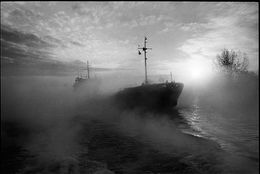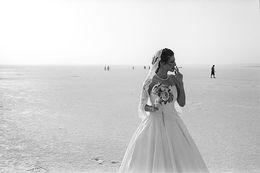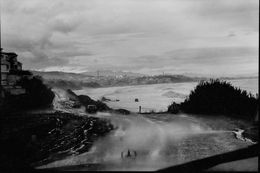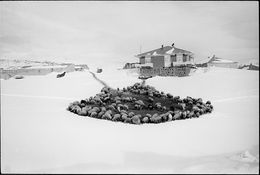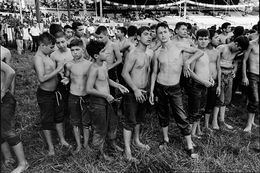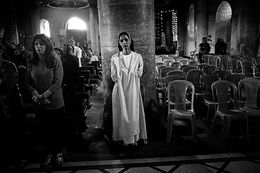At the crossroads of old and new empires, Levant crosses the Bosphorus that connects the Black and Mediterranean seas, the geographical border between East and West.
Levant explores from East to West – from the Balkans to the Caucasus, from Ukraine to Iran, Iraq, Syria and beyond – the dilemmas of a vast region of confluences and cultural tensions where several theaters of war are taking place.
Levant skirts the torments of the past inscribed in the memory of the landscapes: the ancient Greek cities on the Turkish coasts, the abandoned Armenian churches around Mount Ararat, the tombs that line up by the thousands in the cemetery of Srebrenica are all traces of a violent history. War returns: jihadists ravage Iraq and Syria, terrorize European capitals; Putin’s Russia besieges the eastern borders of Europe. The horizons tilt, the earth trembles, the shock wave crosses the entire peninsula.
Past and contemporary torments give the story of the Levant its voice and rhythm, and have traced, for about fifteen years, the photographer's itinerary. On his path: the migration crisis - bodies thrown into the Mediterranean and on the Balkan route - Islamic fundamentalism in Iran, tensions in the Caucasus, wars in Iraq, Syria, Ukraine.
In these territories, Matthieu Chazal photographs duality, opposites: there is the tension that precedes the action, the brutality of the fighting, the lulls. Between two fires, we maintain a semblance of ordinary life: we still get married, we go to the cemetery, to school, to the market, to the baths; we gather and circulate, we laugh, we cry.
Levant is composed of scenes from everyday life, fields and wastelands, palaces and ruins, shimmering costumes and austere uniforms, padlocked borders and passes, dead ends, confines, horizons. At human height, Matthieu Chazal leaves room for the spontaneity of the characters who enter the frame, for the disparity of their feelings and passions. He captures on the fly trivial and modest adventures, almost-nothings that give the story a theatrical dimension.
Here violence and truce, adventure, wandering, waiting, the fragile balance between order and disorder, between life and death, are at play.
Read more

